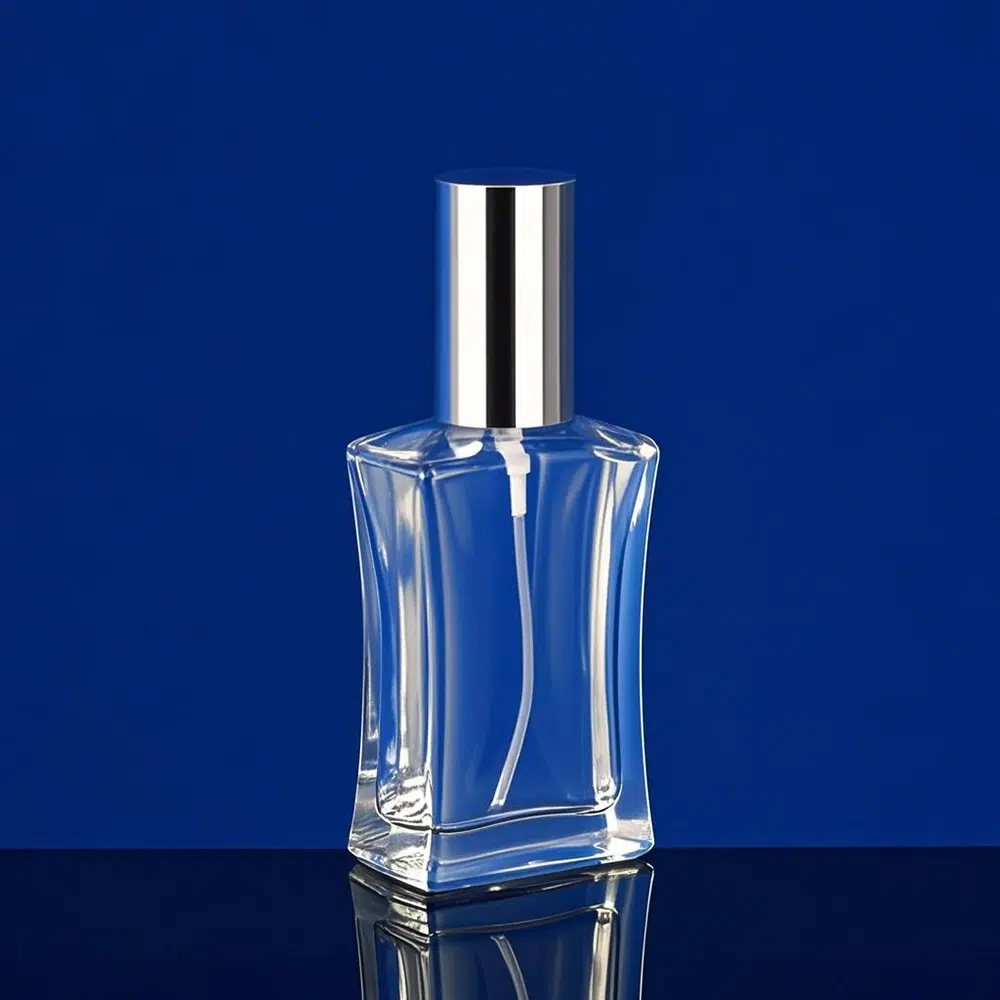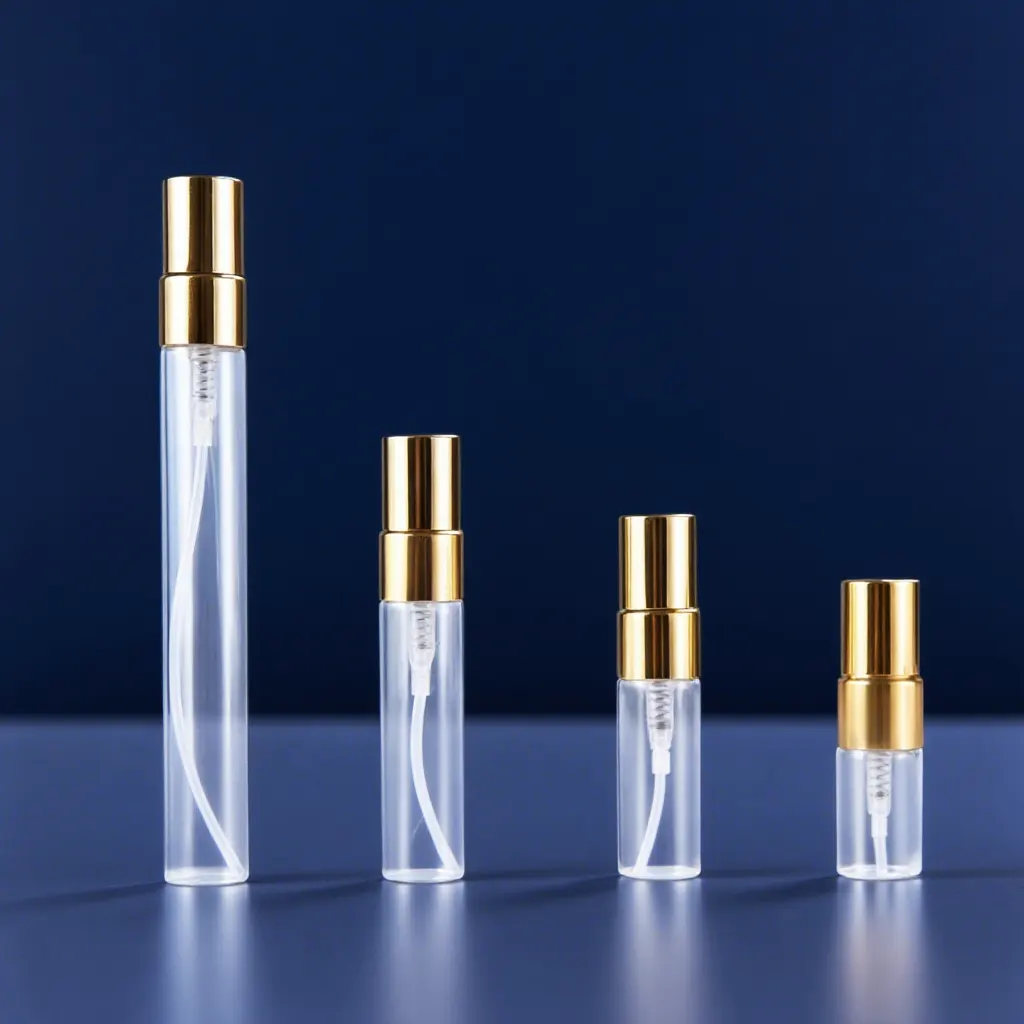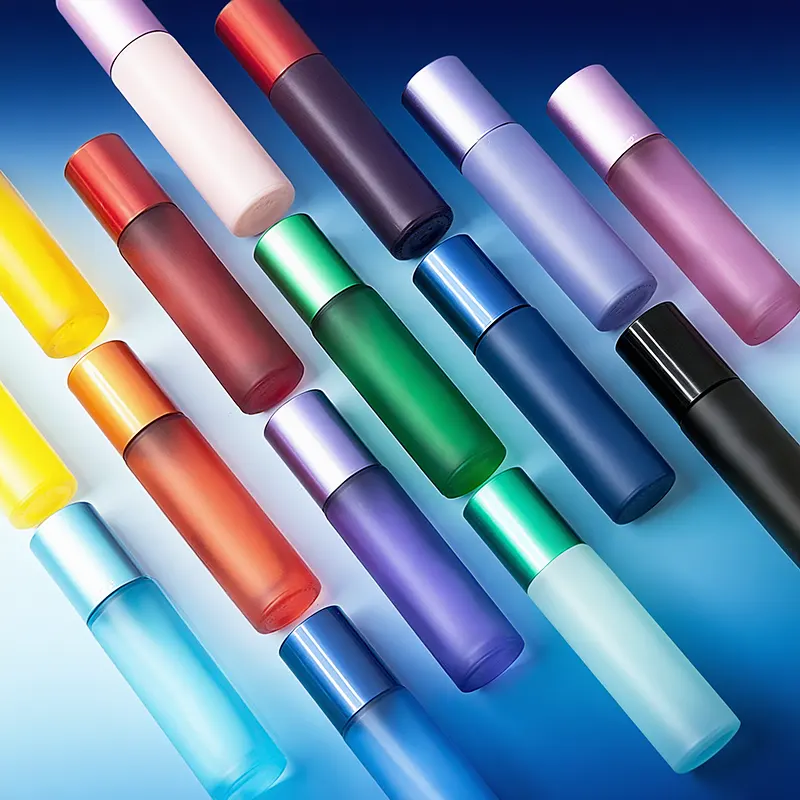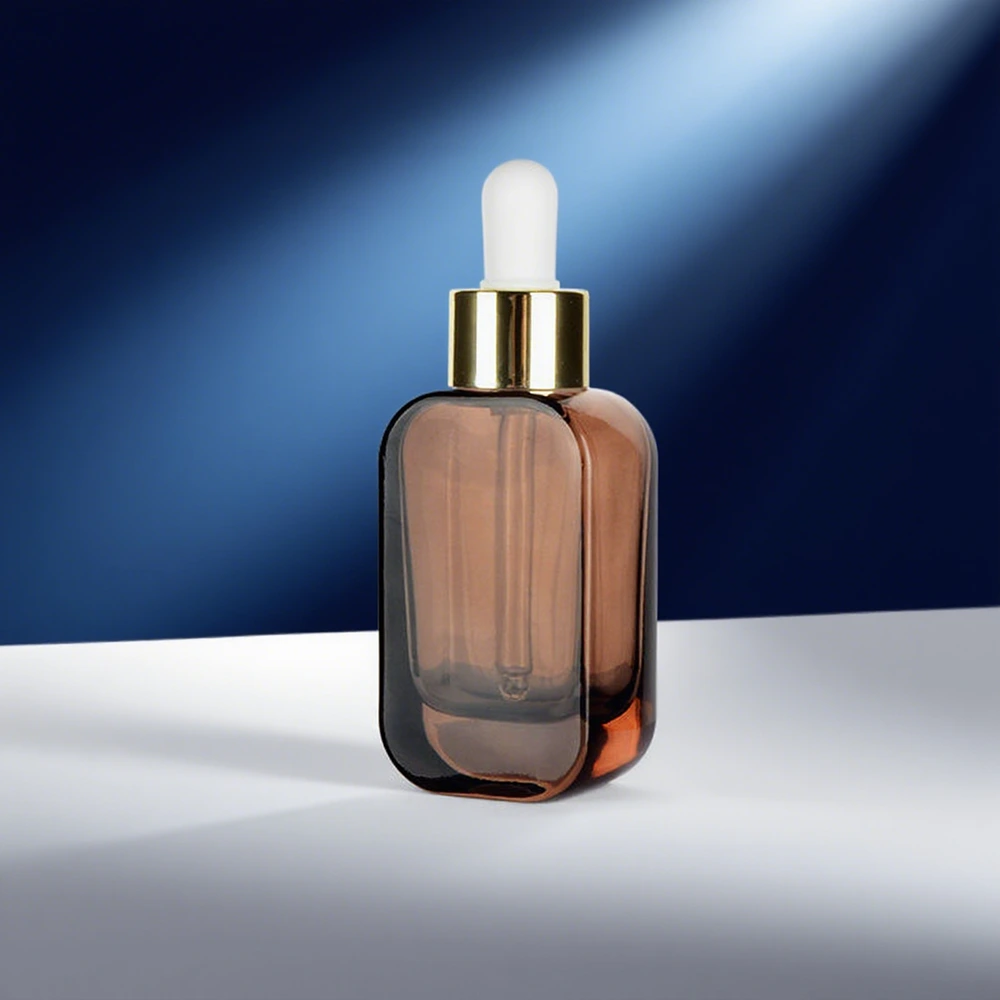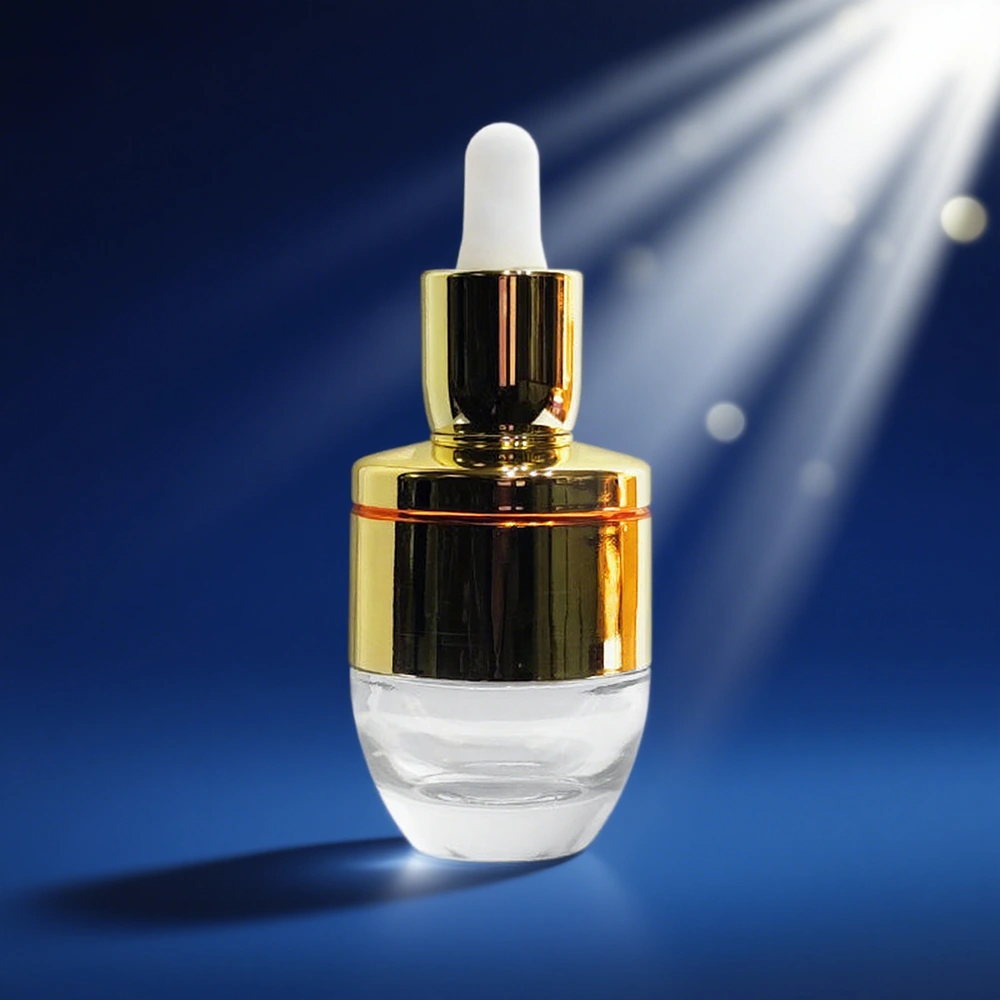
What to Do With Empty Perfume Bottles: A Comprehensive Analysis
Table of Contents
Introduction
Each luxury perfume bottle carries a unique craft and story, but what to do with the empty perfume bottles is often tangled. They are often made of precious materials and ingenious designs. How to properly dispose of them after use? This guide will reveal tips such as green recycling, creative transformation, and brand recycling programs.Whether you’re transforming empty bottles or taking part in environmental initiatives, every choice helps reduce the burden on the environment and gives them a new lease of life – elegance continues in a sustainable future.
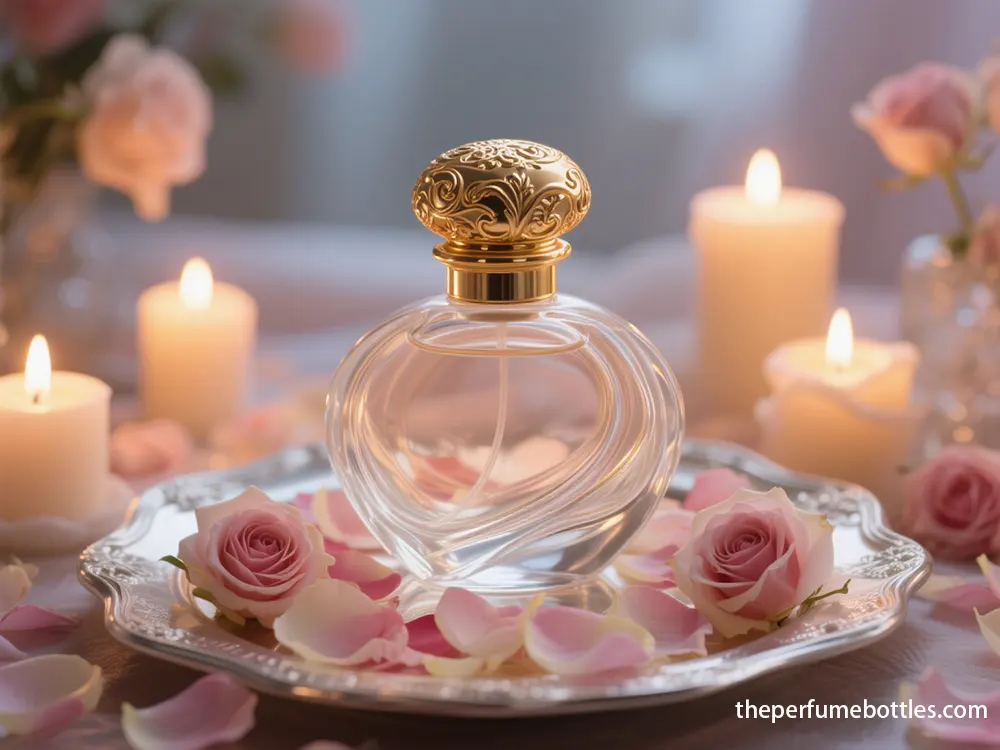
Get Free Samples
1. Proper disposal, recycling and environmental impact
After the perfume is used up, the empty bottles left behind are difficult to handle due to the complex residual fragrance and the imperfect recycling system.
1.1. Challenges in Disposal and Recycling
Perfume bottles are typically glass but include plastic pumps, metal collars, and decorations. This multi-material nature complicates recycling, often requiring separation not handled by standard machinery. Residual perfume contaminates recycling streams and is hazardous waste due to chemicals. Improper disposal harms soil, water, and aquatic life.
Local recycling rules vary significantly. Consumers must check local guidelines. Partially full bottles are Household Hazardous Waste (HHW) and need designated disposal.
1.2. Preparing Bottles for Recycling
Proper preparation improves recycling chances. Empty the bottle completely, allowing residue to air out or using absorbent material. Dispose of saturated material properly.Remove non-recyclable parts such as pumps, lids and straws. Look for recycling symbols and contact your local recycling center to find out if it can be recycled.
Brands like Vesseluxe focus on sustainable packaging due to consumer demand and regulations. This drives shifts to glass and sustainable materials like recycled paper.
1.3. Regulatory Landscape
Regulations, like the EU’s Packaging and Packaging Waste Regulation (PPWR), drive sustainable practices. By 2030, cosmetic packaging must meet recycling criteria, with stricter rules by 2035. PPWR mandates recycled content (with safety flexibility) and clear sorting/reuse labeling. Restrictions include phasing out miniature hotel cosmetics.Extended Producer Responsibility (EPR) schemes involve producers in waste management.The Cosmetic Regulation (EC) No 1223/2009 ensures packaging safety.
1.4. Innovations in Recycling and Sustainable Design
Challenges drive innovation. Closed-loop systems, improved sorting (air, optical, AI like PICVISA’s ECOGLASS), green furnaces, and glass-to-sand technology are emerging.Advanced tech like EVERGLASS’s laser transformation aims to recycle difficult glass.
Design for recyclability is key. Considerations include glass composition, color, decorations, and closures. Companies like Biffa recycle composite packaging.
Comparing plastic and glass: Plastic is light/cheap but lacks luxury feel, is hard to recycle, degrades slowly, and can leach chemicals. Glass is natural, biodegradable over time, stable, durable, and has higher recyclability (76% vs. 41% for plastic).
Perfume spray pumps (plastic, metal, rubber) also have lifecycle impact.Companies adopt take-back systems for bottles and pumps.
Life Cycle Assessment (LCA) evaluates environmental impact from raw material to disposal (ISO 14040/14044). Social LCA (S-LCA) assesses socio-economic impacts.IFF-LMR adapts LCA for natural ingredients.
Material innovation explores biodegradable plastics, bamboo, and mushroom packaging.Brands pursue carbon neutrality.Legislation and education are vital.Transparent, minimalist design aligns with sustainability.
2. Potential Resale Value and Collectibility
Empty perfume bottles, especially vintage or high-end ones, can have significant value for collectors.
2.1. Factors Influencing Collectibility
Value depends on:
- Brand Prestige: Chanel, Dior, Guerlain.
- Designer Influence: Lalique, Baccarat, René Lalique.
- Vintage Period: Earlier eras.
- Rarity: Limited editions, campaign ties.
- Bottle Design: Unique, intricate designs.
- Condition: Free from damage.
- Completeness: Original box, packaging, literature.
- Historical/Cultural Significance: Celebrity or event connections.
- Batch Codes: Provide origin/date info.
- Full vs. Empty: Empty bottles still hold value if other factors are strong.
- Material: Gilt, enameled glass, brass overlays.
Brands like Vesseluxe could see bottles become collectible, especially limited editions or designer collaborations.
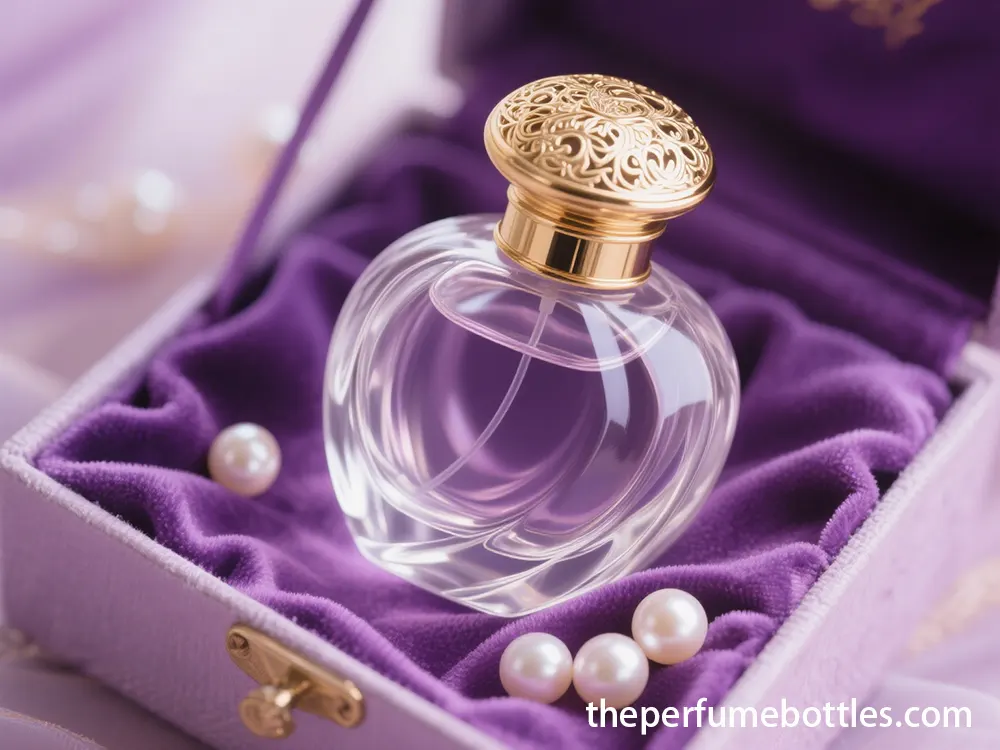
Get Free Samples
2.2. Selling Platforms
Platforms for selling empty bottles include:
- eBay: Large audience, auction/sales formats.
- Online Marketplaces: General platforms.
- Specialized Collectors Clubs/Forums: Direct access to enthusiasts.
- Antique Shops and Flea Markets: Physical locations.
- Social Media: Instagram, Facebook groups.
- Consignment Stores: Luxury/vintage focus.
- Garage Sales: Local buyers.
2.3. Price Ranges and Examples
Value varies widely. Examples range from typical Avon bottles (10−10−100) to vintage or artist-designed pieces fetching 35toover35toover195.
2.4. General Tips for Selling
- Clean and Prepare: Clean bottles carefully, removing residue/labels without damage.
- Research and Price: Check online sales for market value.
- High-Quality Photos: Clear, multi-angle photos showcase condition/design.
- Original Boxes: Including the box can increase value by ~10%.
2.5. Iconic Brands and Designs
Notable brands/designers for collectible bottles: Chanel, Dior, Guerlain, Lalique, Baccarat, René Lalique, and Avon (for novelty designs).
The collectibility market offers an alternative to disposal, valuing bottles for their artistic and historical merit.
3. Creative Repurposing and Upcycling
After the perfume is used up, the bottle can continue to be used as an aromatherapy lamp or decorative bottle. This reuse allows resources to be fully developed and also gives each bottle a new meaning.
3.1. Innovative DIY Ideas
Unique bottle shapes lend themselves to various projects:
- DIY Room Diffusers: Fill with carrier/essential oils, add reeds.Decorate to match decor.
- Flower Vases: Use for single stems or small blooms. Add stones/beads.
- Essential Oil Blends: Store homemade blends.
- Jewelry Holders: Use necks/bases for rings.
- Art Projects: Incorporate into mixed media.
- Candle Holders: Place tea lights on stable bottles. Group bottles for display.
- Ornaments: Fill with glitter/beads, add string.Can act as suncatchers.
- Mini Planters: Use wider bottles for small succulents/air plants.
- Light Features: Insert fairy lights.
- Decorative Storage: Store small items like beads or bath salts.
- Wedding/Party Favors: Clean, refill with treats/scents, add labels.
- Glitter Globes: Create miniature globes with glitter, water, glycerin.
- Miniature Terrariums: Layer materials for small plant displays.
- DIY Perfume/Room Spray: Clean and refill with homemade scents.
- Other Uses: Store body shimmer, create glass sachets, cooling mist, or toiletries.
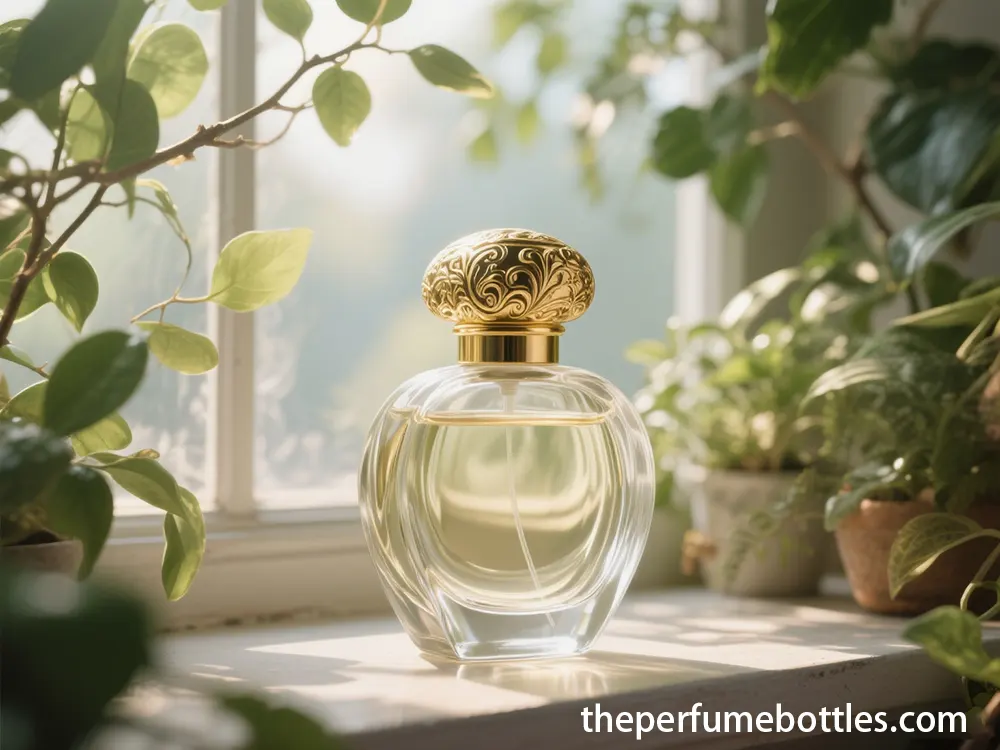
Get Free Samples
3.2. Selling or Gifting Upcycled Bottles
Upcycled bottles make unique gifts. Crafted items can be sold on platforms like Etsy.
3.3. Refilling and Practical Uses
Some brands offer refills (Louis Vuitton, Le Labo).Mini bottles can be refilled for practical uses like mouthwash.Refilling with water/dye to mimic fragrance for resale is unethical.
Repurposing offers creative, sustainable alternatives to discarding bottles, utilizing their aesthetic and material potential.
4. Brand-Specific Return and Recycling Programs
Increasingly, brands and retailers offer bottle return programs to address packaging waste and meet consumer demand for sustainability.
4.1. Program Mechanics and Brand Participation
Programs involve returning empty bottles to drop-off points (stores) or via mail.Bottles go to specialized recycling facilities.
Examples:
- Nordstrom: Take-back program for perfume packaging.
- Refillable Options: Guerlain, Mugler, Byredo, Le Labo (in-store refills) offer refills to reduce new bottle need.
- Sustainable Materials: Clean Reserve uses glass and responsibly sourced caps.
- MECCA and TerraCycle: Partnership accepts cosmetic/perfume packaging from any brand at stores (with limitations on residue/items).
- L’Occitane: Recycling program at boutiques and mail-back option.

Get Free Samples
4.2. Logistics and Challenges
Collecting, sorting, and transporting bottles for specialized recycling is complex and costly. Proper emptying/cleaning is vital to prevent contamination.Separating mixed materials requires specialized equipment.
Despite challenges, growth in refillable packaging and brand programs shows industry commitment to a circular economy.These initiatives, consumer awareness, and regulations drive sustainable practices. Brands like VESSELUXE will likely expand such programs.
4.3. Consumer Role and Future Outlook
Consumer participation is crucial. Every choice is a gentle one – using refillable packaging, participating in community recycling projects, and cleaning every bottle carefully. These small actions are gathering together to become a force for change. The advancement of technology and the improvement of policies are paving a more environmentally friendly future for us, making “circularity” no longer just an ideal, but a lifestyle within reach.
Conclusion
Empty fragrance bottles do not must give up as waste—they can be recycled, collected, or creatively repurposed to increase their value and reduce environmental effect. From know-how right disposal methods and exploring resale capacity to embracing upcycling thoughts and becoming a member of emblem recycling applications, every step contributes to a extra sustainable destiny. At Vesseluxe, we’re dedicated to this vision by means of imparting eco-aware packaging, assisting circularity, and provoking elegant reuse. Choosing Vesseluxe approach deciding on a emblem that no longer best values beauty and craftsmanship however additionally leads the manner in sustainable innovation—making your perfume journey both highly-priced and responsible.
Comments
Product Categories
Hot Sale Bottles
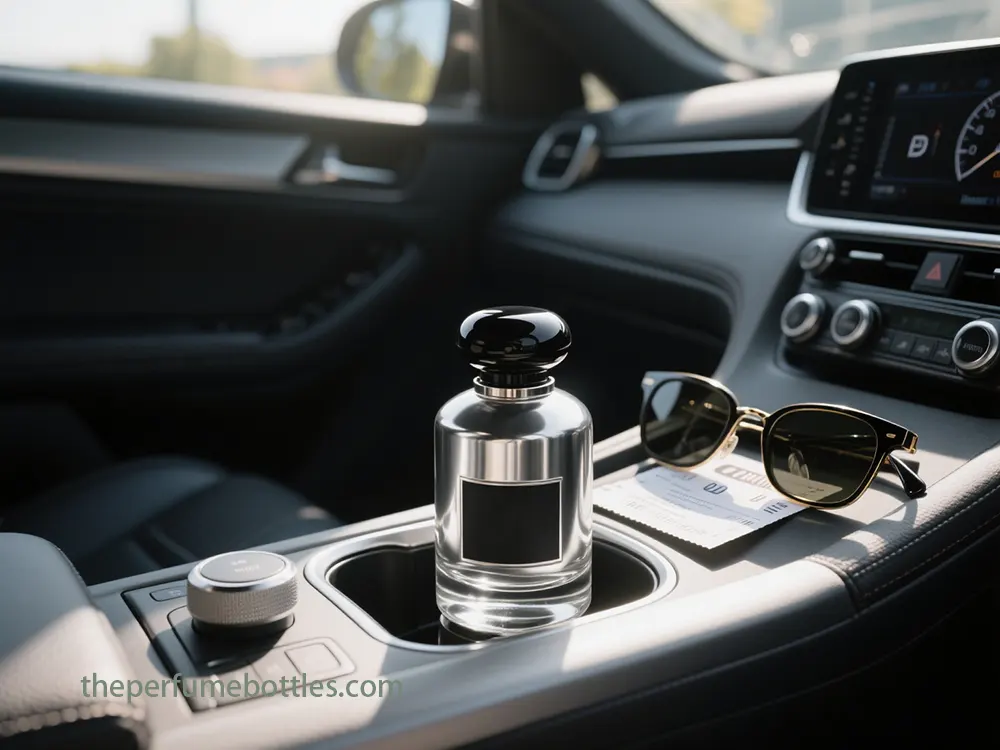
Elevating Brand Identity: Strategic Perfume Glass Bottles Wholesale for Premium Market Positioning
Discover how strategic selection of perfume glass bottles wholesale elevates brand identity.

From Minimalism to Luxury: Design Trends in Aromatherapy Oil Bottles
Discover the evolution of aromatherapy oil bottles from minimalist to luxury, with premium materials
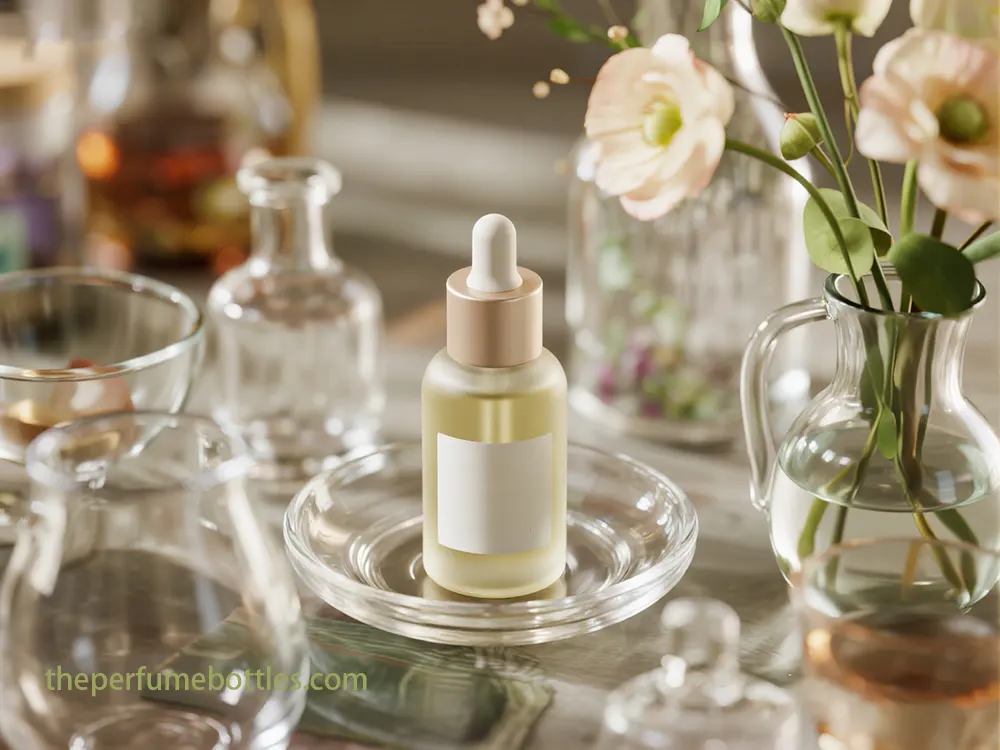
The 30ml Euro Dropper Bottle: A Strategic in Essential Oils
Discover why the 30ml Euro Dropper bottle is ideal for startups in oils, CBD, serums, and e-liquids, offering
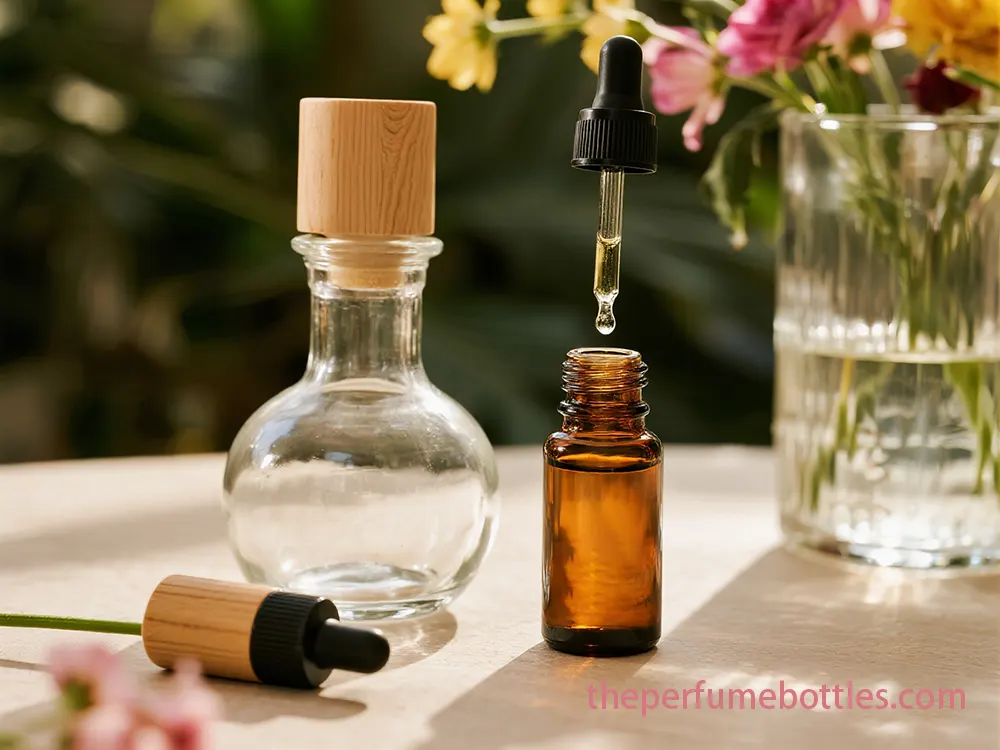
From Dropper Caps to Roller Balls: Choosing the Right Closure for Essential Oils Bottle
Optimize essential oil bottles with the right closure—droppers, roller balls, and more for better preservation, user experience, and compliance.
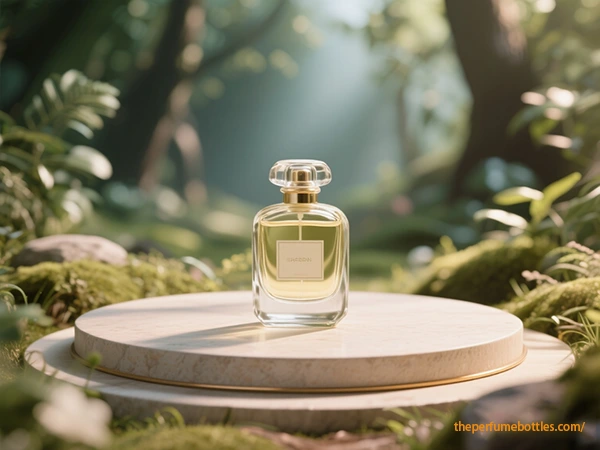
How to Refill Perfume Bottle?
Discover top fragrance bottle manufacturers for bulk orders. Explore custom designs, durable materials, and wholesale solutions for global brands.
- +86 186 5178 1159
- [email protected]
- Mon-Sun 07:00-21:00
Tags
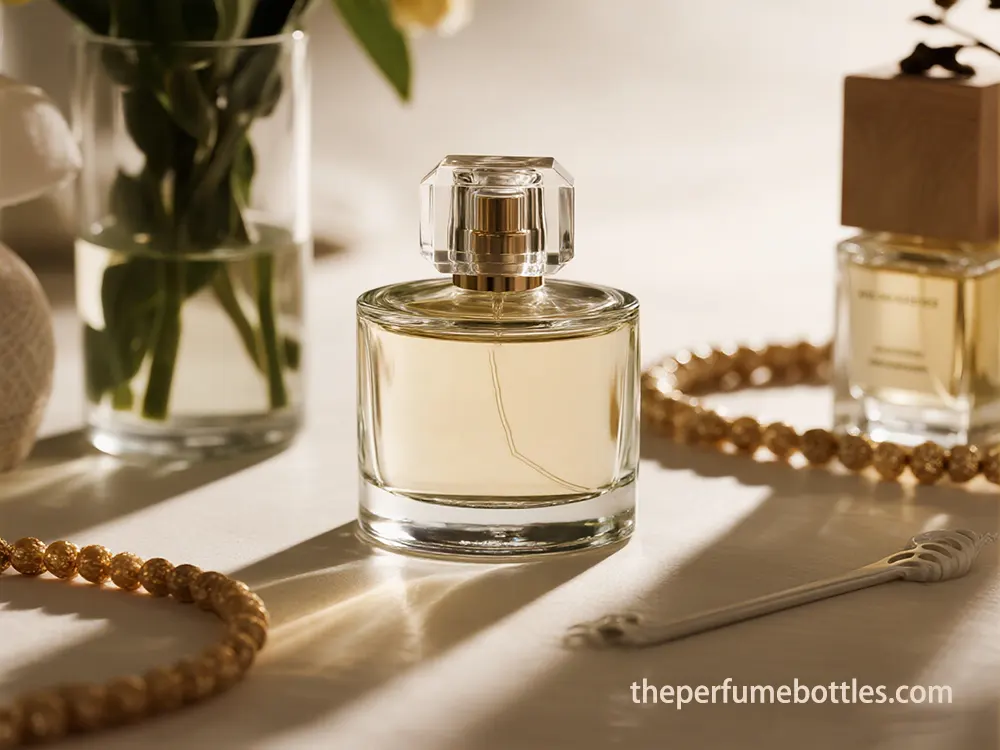
A Strategic Framework for Selecting a Glass Perfume Bottles Supplier
Find your strategic glass perfume bottles supplier with this guide, showing how the right partner boosts speed and scalable growth for fragrance brands.
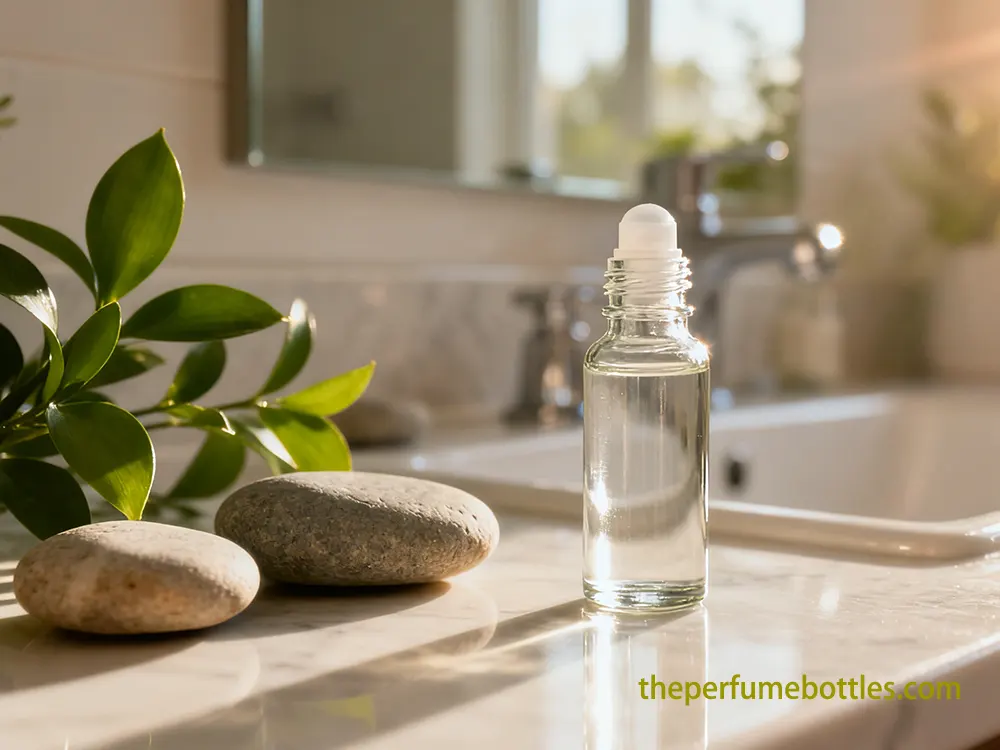
Case Study: Our Glass Roller Bottles Factory Delivered Packaging for an Essential Oil Brand
A case study on how a glass roller bottles factory solved rolling stability and thin-neck durability issues to deliver reliable, leak-free premium bottles.
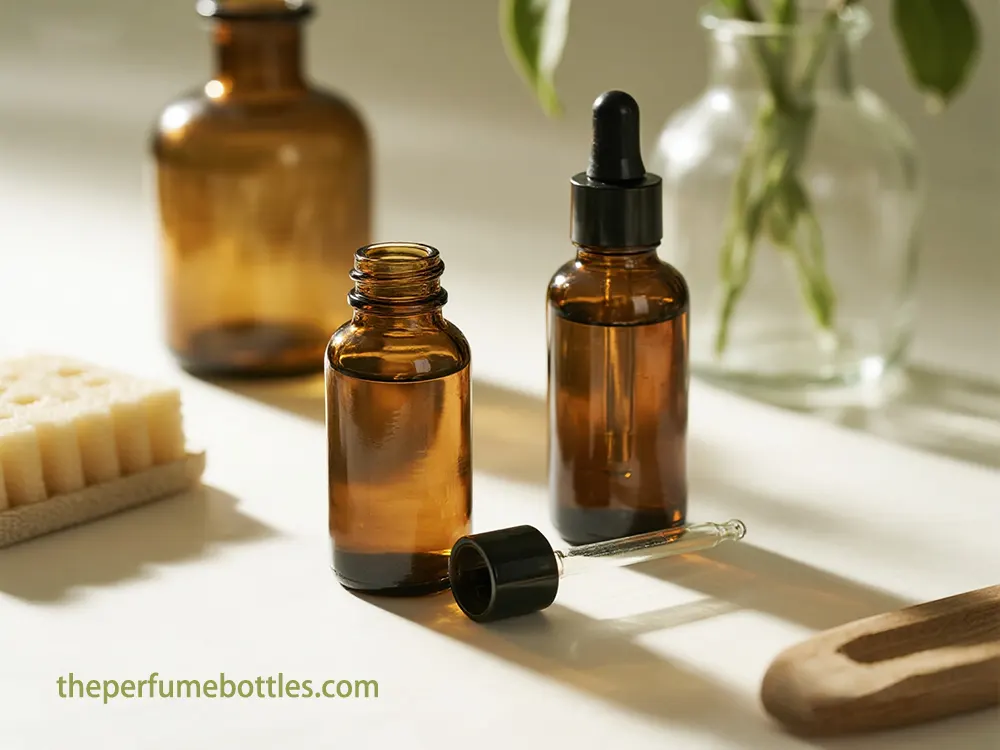
Case Study: How a Glass Dropper Bottles Factory Helped a Healing Oil Brand
A case study of how a glass dropper bottles factory helped a Portuguese healing oil brand achieve precise dosing, improved grip, and premium custom packaging.
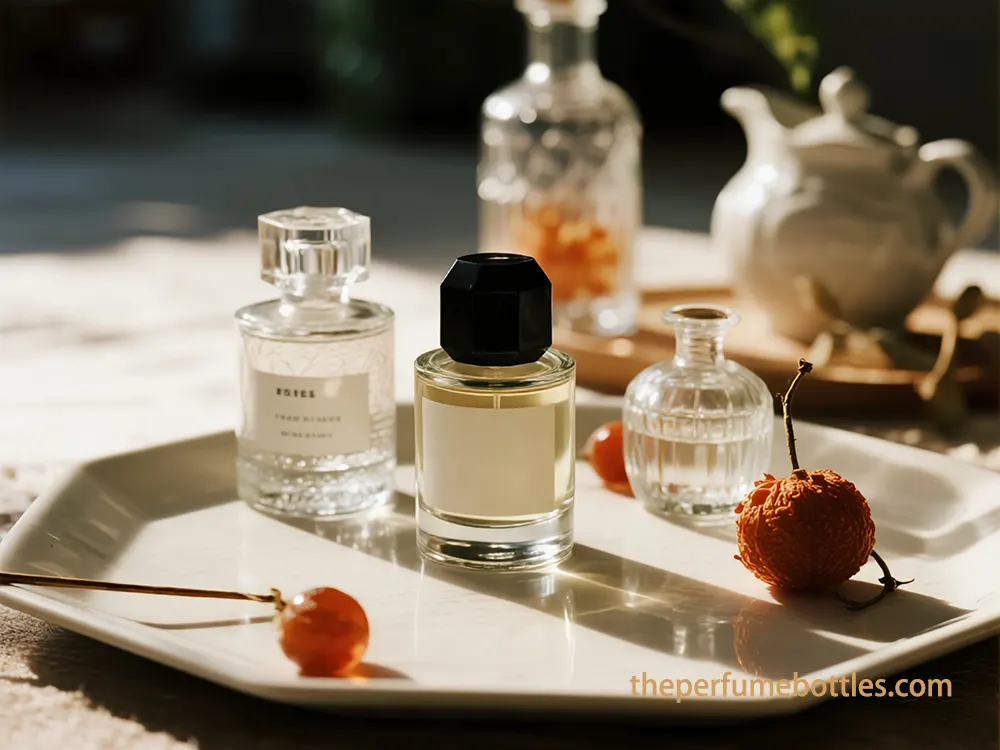
The Journey of a Fragrance from a Glass Perfume Bottles Factory and Beyond
Discover how a leading glass perfume bottles factory, advanced chemistry, and global logistics

